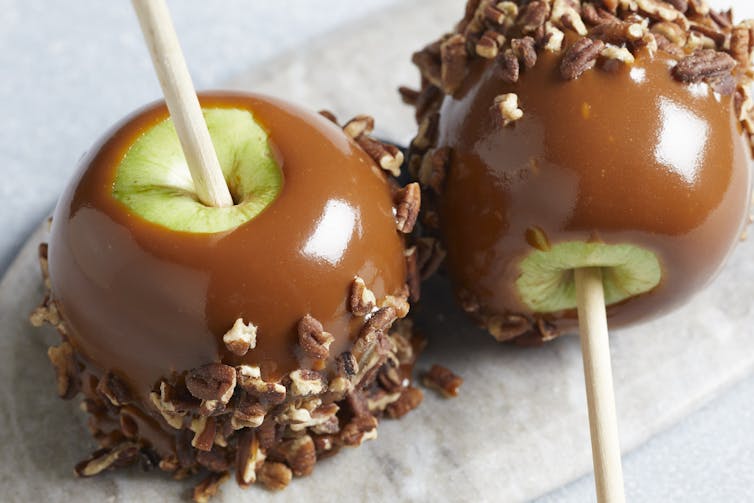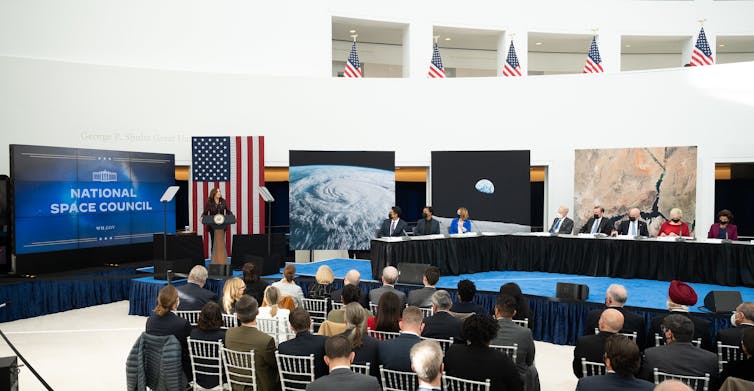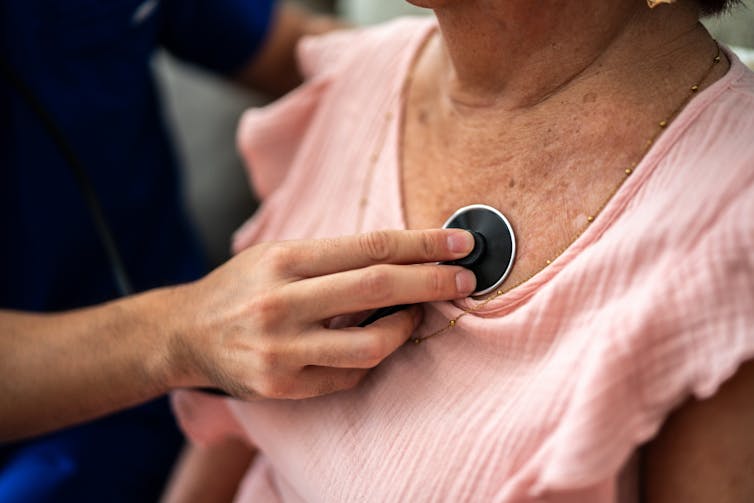Supreme Court Justice Samuel Alito Jr., left, and his wife, Martha-Ann Alito, photographed in 2018.
Anne Toomey McKenna, University of Richmond
Posing as a “Christian conservative” at the Supreme Court Historical Society’s members-only, black-tie gala, liberal journalist and filmmaker Lauren Windsor secretly recorded her conversations with Supreme Court Chief Justice John Roberts, Justice Samuel Alito and Alito’s wife, Martha-Ann Alito. The event on June 3, 2024, was not open to journalists.
The nature of the remarks in the surreptitiously obtained recordings has renewed discussion about Justice Alito’s impartiality – Windsor’s goal in making the recording – and raised questions about journalistic ethics. But the recordings also highlight two significant problems society faces.
First is the reality of pervasive, electronic surveillance today: Everyone wears or carries one or more always-on smart devices embedded with highly sophisticated audio- and visual-sensing capabilities. The microphones and cameras in people’s smartphones and smartwatches record, collect and share their communications, locations and activities. Even for the rare person who avoids such devices, they are still typically surrounded by others’ devices.
Second is the failure of U.S. law’s once-robust electronic surveillance legal framework embodied in the federal Electronic Communications Privacy Act, commonly referred to as the Wiretap Act, and state counterparts to keep pace in the era of smart devices. The weakened surveillance protections are coupled with the legislative failure to protect data privacy.
I am an attorney and law professor at the University of Richmond’s School of Law, and these laws and issues are the focus of my legal practice and research as lead author of “Wiretapping & Eavesdropping”, a four-volume work covering privacy and electronic surveillance law.
The who, how and where of recording
Electronic surveillance laws make it a crime to use a “device” to surreptitiously record or intercept communications, like email and oral conversation, without consent. Doing so, whether remotely or in person, is sometimes referred to as wiretapping or electronic eavesdropping. From the nature of Samuel and Martha-Ann Alito’s remarks, it appears they were unaware they were being recorded. So, did this undercover advocacy journalist violate wiretapping laws?
From a legal standpoint, the facts about who was being recorded, how they were being recorded and where they were being recorded matter. If someone is aware they are being recorded – and continues speaking – or has consented to being recorded, the recording is usually lawful.
The Wiretap Act and some state counterparts, including the District of Columbia’s law, permit recording if one person in a conversation consents, even if other participants in that conversation are unaware that they are being recorded. In other words, if you’re speaking privately with someone, you take the risk that they may be recording you, even if they deceive you about who they are, as Windsor did in this case, and as undercover agents do all the time.
Some states, like Maryland, require the consent of all people in a private communication to record it. Wiretapping and eavesdropping laws also consider whether a communication or conversation is private, considering where and how it takes place. If it occurs in a public place where others can hear what is being said, it is usually not private and not protected.
What device did Lauren Windsor use? She could have used a small, sophisticated device specifically designed for electronic eavesdropping, or she could have used her phone. It doesn’t really matter under the law. It was a device, and virtually everyone, of their own accord, carries highly sophisticated listening and recording devices in the form of smartphones and smartwatches.
The facts surrounding this recording indicate that it was made in Washington D.C. – a one-party consent jurisdiction – by a person who was a party to the conversation. More importantly, it was made at an event where many people were in attendance and speaking within earshot of others. Given the setting and the prominence of the justices as public figures at the event, the recording of their conversations is likely lawful – regardless of jurisdiction. Windsor may have violated some event attendance terms – in legal terms, a contract – but not wiretapping and eavesdropping laws.
A failure of wiretapping and privacy laws
The justices should not be surprised by this recording. No one should be. Wiretapping laws afford little protection these days. The outdated consent exceptions in these laws – enacted long before the always-on, always-listening smart device era – and the lack of a federal data privacy law render the once-robust electronic surveillance laws toothless.
Because people routinely click “I agree” to the terms and conditions presented by smart devices and apps – which is often the only choice to use the device or app – in so doing, they consent to being tracked and recorded 24/7 by their own devices and apps. Smart devices listen at all times, ostensibly so the device can respond to user’s verbal queries or prompts, but it is also to collect communications and associated data. That data can then be analyzed, sold or traded in the data market for behavioral manipulation via targeted messaging or advertising.
Because users at some point consented to being tracked or recorded, regardless of how meaningful or informed that consent was, the protections of wiretapping laws are eviscerated.
Nearly everyone is being recorded, nearly all of the time.
Anne Toomey McKenna, Visiting Professor of Law, University of Richmond
This article is republished from The Conversation under a Creative Commons license. Read the original article.





















































